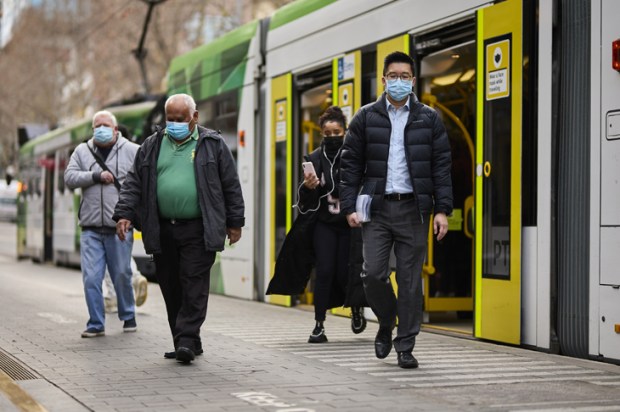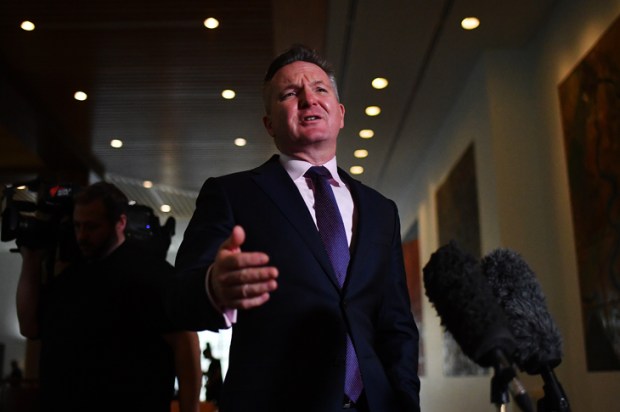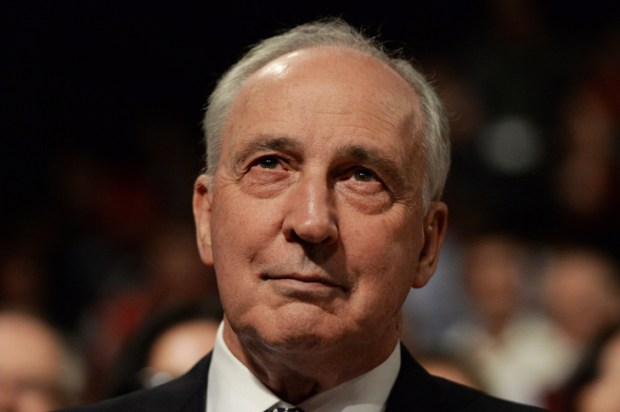On the day of his inauguration, President Joe Biden signed a slew of executive orders, one of which mandated masks in all federal buildings. That evening he was spotted at the Lincoln Memorial sans mask. Press secretary Jen Psaki explained Biden was ‘celebrating an evening of a historic day’ and there are ‘bigger issues to worry about at this moment in time’. Biden thus began his presidency by joining a long list of officials who flout the rules they impose on all others, including Dr Anthony Fauci, director of the National Institute of Allergy and Infectious Diseases.
Masks are dehumanising and a potent force for stoking mass fear. Facial expressions are crucial in social interactions, including for babies. Compulsory masking for everyone in all settings is a gross violation of fundamental human rights. It can be justified only if the evidence for their efficacy in community protection is compelling and the risk of harms is negligible. Instead, mask mandates have been heavy on fear-mongering and virtue-signalling but light on data and science, overturning, in a couple of months, cumulative scientific consensus built over decades. The empirical data from around the world last year mostly validates the previous consensus. Rather than protect communities, masks have given politicians delusions of omnipotence and liberated some cops to indulge their inner thugs against peaceful dissenters, as we saw in Melbourne.
In March, Fauci told people not to walk around with masks. It might make them feel better but doesn’t provide perfect protection and people keep fiddling with it and touching their face. In July, after calling for everyone to wear masks, Fauci defended his original advice: ‘in the context of the time, it was correct’ because we had ‘a serious problem with the lack’ of personal protective equipment for healthcare workers. On 15 September he said a ‘national mandate probably would not work’. But in a CNN interview on 23 October he called for a nationwide universal mask mandate.
Roger Koops explains how in the general population, masks confer no benefit and pose a net transmission risk to the wearer and others by trapping the virus on the inside and through surface contamination. Fauci’s earlier comment accurately stated the existing consensus on benefits versus harms. This can be found in:
– The UK’s Pandemic Preparedness Strategy (2011), reaffirmed on 27 February and by Deputy Chief Medical Officer Professor Jonathan Van Tam on 3 April;
– The state-of-the-art WHO report in October 2019, repeated by top WHO doctors Mike Ryan and Maria Van Kerkhove in March 2020 and softened only slightly in the updated guidance on 5 June;
– An article in the prestigious New England Journal of Medicine;
– A large Danish study published in the top-three medical journal Annals of Internal Medicine;
– A note from Oxford University’s Centre for Evidence-Based Medicine;
– An Australian Department of Health document in July 2020.
In the US, most randomised trials of community or household masking show mask-wearing has negligible effect on virus transmission. The Centers for Disease Control and Prevention (CDC) said 85 per cent of infected Americans reported wearing masks always/often in the two weeks before their Covid illness.
On 4 November, a team of US-based researchers withdrew their paper because of increased rates of Covid-19 cases in areas analysed in the study. They’d forgotten that respiratory infections decline in summer and climb again in autumn! In country after country and US states, caseloads surged in autumn/winter despite universal mask mandates – and did not surge as sharply in Denmark and Norway without mask mandates. When Sweden modified its anti-mask policy in mid-December, it was to recommend masks in public transport during rush hour.
CNN said on 19 October: ‘Masks made Czech Republic the envy of Europe. Now they’ve blown it’. On 26 January Czechia’s deaths per million (DPM) was 1,441, a third higher than Sweden. Or consider New York and Florida with comparable populations. Florida is better on population density, warmth and sunshine, but has an older population. It has had open borders, parks, restaurants and schools for months. New York cancelled these simple pleasures and essentials of life with a stringent lockdown, including a statewide mask mandate from 17 April for anyone in a public place. Florida let individual counties decide. As of 26 January, Florida’s mortality rate was half New York’s: 1,185-2,189 DPM. Among Florida counties, 22 that had mask mandates for some time had 230 daily cases per million people in mid-December, and the 45 that never imposed a mask mandate had 220.
While useful as a psychological crutch against fear, masks can cause a range of potential harms as listed by the WHO. Many wearers engage in riskier behaviour believing in the protective efficacy of masks. In December, a hundred doctors, paediatricians and clinical psychologists wrote an open letter to the UK government warning that requiring masks in schools breached WHO guidelines and was creating a ‘climate of fear’. A German study in January noted a range of impairments experienced by 68 per cent of children and adolescents wearing masks.
Government directives have been riddled with scientific illiteracy. There’s no need for masks inside a car, for a family playing in a park or on the beach separated from others, or for a solitary farmer on his tractor in a lonely paddock in country Victoria. A Wisconsin state agency ordered its employees to be masked during Zoom meetings when home alone. Washington state mandated masks for youth sports whenever playing outside including in rain, even though a wet mask is useless. Proving history does irony, banks that once feared masked robbers now fear mask-free customers.
The CDC tweeted that during the March–July 2020 period, ‘universal mask use helped reduce Covid-19 cases, hospitalisations, and deaths’ in Delaware. It was telling the truth, but not the whole truth. The mandate was introduced on 28 April when Delaware had 235 cases. On 30 June cases had indeed fallen to 89, but surged again in autumn and on 12 December there were 826 cases.
Fair enough, you might say, like many others the CDC failed to anticipate the seasonal surge. Except the tweet was sent out on 6 January 2021. Unless it was fake, this looks suspiciously like deliberate dishonesty.
Got something to add? Join the discussion and comment below.
Get 10 issues for just $10
Subscribe to The Spectator Australia today for the next 10 magazine issues, plus full online access, for just $10.
You might disagree with half of it, but you’ll enjoy reading all of it. Try your first month for free, then just $2 a week for the remainder of your first year.














Comments
Don't miss out
Join the conversation with other Spectator Australia readers. Subscribe to leave a comment.
SUBSCRIBEAlready a subscriber? Log in